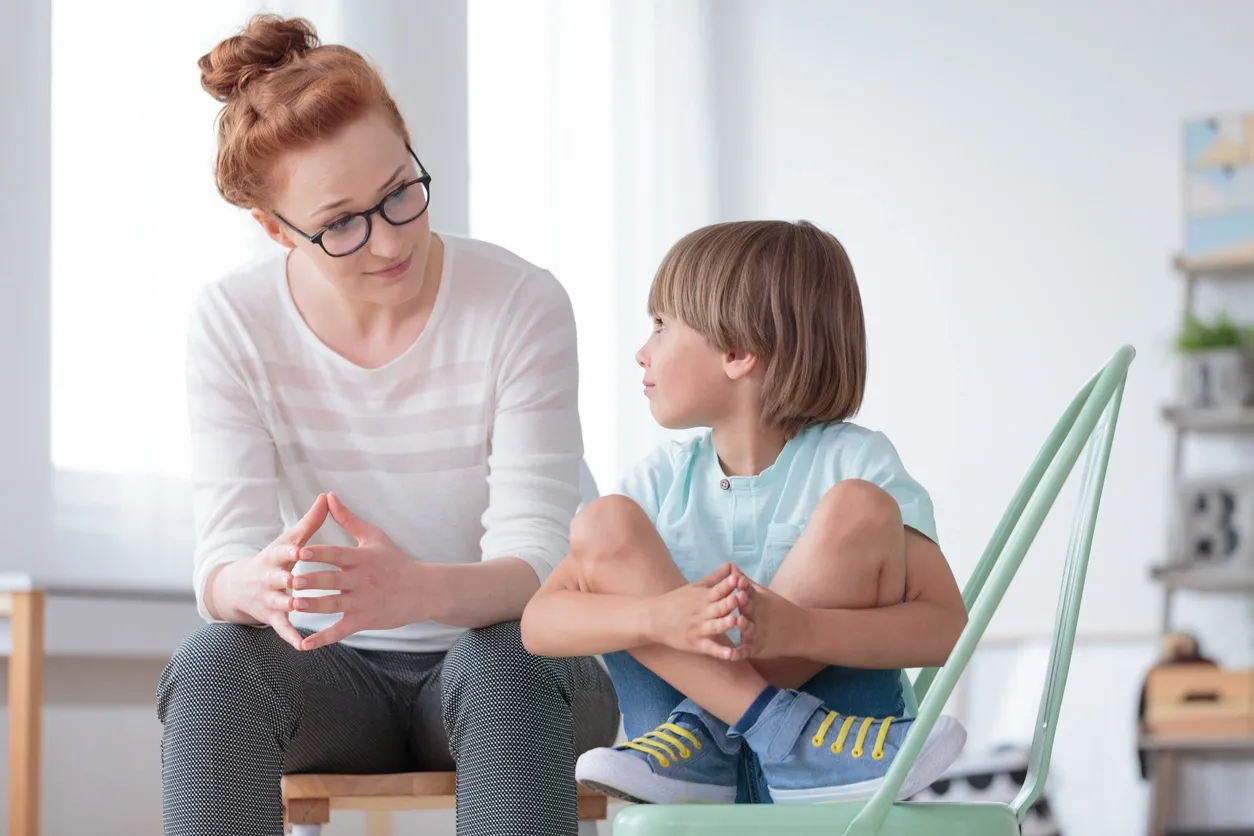Need to know: Anxiety or just common worries
Most parents have had nights when their kid is adamant that they are afraid of the dark and need a cuddle to go to sleep. This can be quite common and is often temporary. Sometimes these normal childhood fears can take over and become full-blown anxiety.
Anxiety is a normal emotion that children and adults alike experience at some point in their lifetime. Anxiety has more than one purpose – it can keep us safe from dangerous situations and it can motivate us to do well.
Research shows that anxiety can be triggered by biology, biochemistry, life situations, and learned behaviours. This puts parents and carers in a very important position of influence, where modelling positive ways of dealing with worries and problem-solving can help reduce child anxiety.
There are many different types of anxiety:
-
- Separation anxiety – overwhelming fear that something bad might happen if the child is not with their parent/carer.
-
- Generalised Anxiety Disorder – excessive worry about everything and everyday life. These children experience chronic anxiety and may seek constant approval and reassurance from people around them.
-
- Panic Disorder – fears that are so intense they trigger chest pain, shortness of breath, racing heart, and a feeling like you are about to pass out.
-
- Phobias – these fears can be triggered by an incident or can emerge without an actual adverse experience. Children will often be very distressed if exposed to their phobia, which can lead to crying or meltdowns.
-
- Social Anxiety Disorder – children will experience intense worries about how others see them and fears about being judged. This disorder can stop a child from participating in activities, school and social events.
-
- Selective Mutism – this disorder is characterised by a child’s ability to speak is dependent on the situation and the people around them. They are often comfortable speaking to a close group of family members and friends but may struggle at school or with strangers.
-
- Obsessive Compulsive Disorder – a child with OCD experiences intrusive thoughts, obsessions, and compulsions that are relieved temporarily, by acting out ritual behaviours. These rituals can include repetitive steps like handwashing and arranging things in a pattern.
Why it’s important
There are physical and psychological signs that tell you your child might be experiencing elevated levels of anxiety. It’s important to pick it up early and get help to address it quickly. Have you noticed your child:
-
- avoids certain situations, places, people and things that make them anxious?
-
- is having regressing behaviours like wetting the bed?
-
- is excessively clingy?
-
- complains of stomach aches and headaches?
-
- experiences shortness of breath, fast heart rate and/or nausea?
-
- insists on having things done in the same way or the same order?
-
- is easily overwhelmed by new experiences?
-
- is on high alert always monitoring everything and everyone around them?
-
- is having difficulty sleeping?
-
- is prone to angry outbursts or aggression?
-
- spends a lot of time in sick bay?
-
- displays perfectionist tendencies?
-
- is refusing to go to school?
Untreated anxiety in children can get worse, impacting both physical and emotional health. If you notice that your child’s worries persist for 1-2 months or they are interfering with their functioning or behaviour, it’s probably time to seek help.
Tips & strategies
Although therapy is important in helping children deal with anxiety, parents/carers are instrumental in ensuring they don’t inadvertently reinforce fears and worries.
Steps to deal with anxiety
-
- Check-in with yourself – are you calm? Are you ready to use your protective instinct and your belief in your child to fuel their courage? Validate your child’s feelings because they want to know you understand the size of their worries, but then take each step towards bravery.
-
- Slow down the breathing – use the breathing technique that your child feels most comfortable with as long as they can slow down their breath
-
- Make them feel safe – sometimes a gentle rub of the back or holding their hand can make a child feel safe which in turn helps them to calm down. Tell your child you know that they can do it. Your trust in them is a signal of safety. Whatever happens, it will be ok.
-
- Use a grounding technique – choose a strategy (3-3-3 rule, 5,4,3,2,1 awareness, progressive muscle relaxation) that guides your child to become more present and reduces the intensity of anxiety. See Part 3 of this anxiety series – a toolkit for managing anxiety, for details on each strategy.
-
- Help them visualise the passing of what they are feeling – talk your child through the anxiety by describing it as a wave of feelings washing over them and then slowly disappearing.
-
- Use the power of cold water – use an ice-cold wet cloth or let them splash cold water on their face. This triggers the mammalian reflex which initiates several physiological changes that calm the body.
-
- Coach them through problem-solving – start by challenging the problem with some facts. Use previous experiences as examples to demonstrate that their worries have never come to pass or that they have faced a similar situation before. Invite your child to size the problem by comparing it to big problems and small problems.


